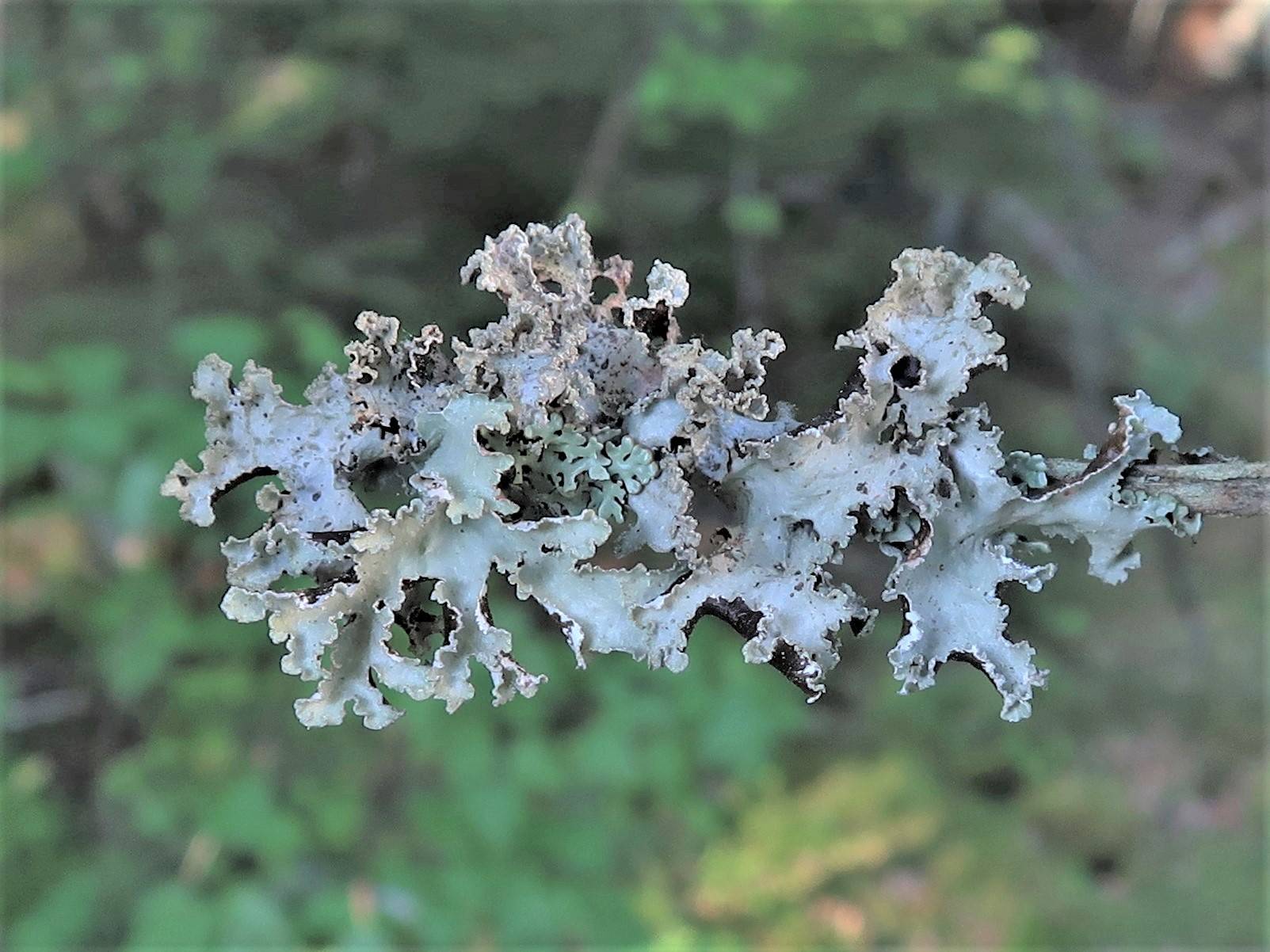
Consortium of Lichen Herbaria
- building a Global Consortium of Bryophytes and Lichens as keystones of cryptobiotic communities -
- Home
- Search
- Images
- Species Checklists
- US States: O-Z >
- US National Parks
- Central America
- South America
- US National Parks
- Southern Subpolar Region
|
Family: Parmeliaceae |
Nash, T.H., Ryan, B.D., Gries, C., Bungartz, F., (eds.) 2002. Lichen Flora of the Greater Sonoran Desert Region. Vol 1. Thallus: foliose, ± rosette-forming or wide-spreading, to subfruticose (suberect), dorsiventral, 5-18 (-23) cm diam. lobes: broad to narrow, (0.1-) 0.3-2.5 cm wide; lobulae: common; margins: often ascending, wavy, sometimes crisped; cilia absent upper surface: ashy white, tan, or greenish-brown, or gray, often rugose; pseudocyphellae: absent or present, punctiform; isidia or soredia: present in some species, marginal or laminal, often inconspicuous upper cortex: well-developed, prosoplectenchymatous, often I+ blue; epicortex non-pored, 15-28 (-32) µm thick medulla: white, (30-) 65-210 (-280) µm thick; cell walls containing Cetraria-type lichenan (I+ blue) and isolichenan photobiont: primary one a chlorococcoid alga, secondary photobiont absent lower cortex: well-developed, (10-) 13-28 (-30) µm thick lower surface: pale to ± black, often mottled, punctate in some species; rhizines: usually present but few, scattered, simple Ascomata: apothecial, often absent or rare, marginal or submarginal, roundish; disc: brown, often perforate; thalline exciple: prominent, persistent; usually lacking algae below the hypothecium; exciple: gray or hyaline; hymenium: I+ blue; uppermost part brown or ochraceous-yellowish; paraphyses: not (or scarcely) branched and anastomosing; hypothecium: hyaline, thin, I+ blue, blue-green, lavender, or purple asci: Lecanora-type, 8-spored ascospores: subglobose to ellipsoid, obtuse at the poles, simple; walls: hyaline and smooth, without distinct endospore thickening, not amyloid Conidiomata: pycnidial, often absent, marginal, immersed conidia: rare, bacilliform, not swollen at apices, 4-7 x 1 µm Secondary metabolites: cortex with ß-orcinol depsides, medulla with aliphatic acids and a ß-orcinol depsidone in one species Geography: temperate-boreal in the Northern Hemisphere Substrate: mostly on bark or wood, rarely on mossy rocks. Notes: The related genus Cetrelia differs especially in having perforate apothecia with thick, I- hypothecium, with thick zone of algae usually present immediately below it, larger and always ellipsoid spores, and frequent pycnidia with bifusiform conidia. Platismatia differs from Parmotrema in lacking cilia, usually having pseudocyphellae, having having marginal to submarginal apothecia and pycnidia, smaller ascospores, lacking depsides and depsidones in the medulla, and having a non-pored (rather than pored) epicortex. |
Powered by Symbiota









